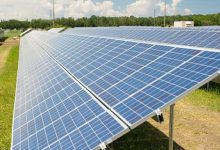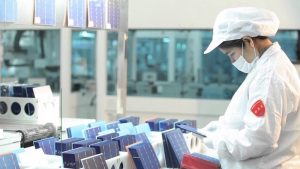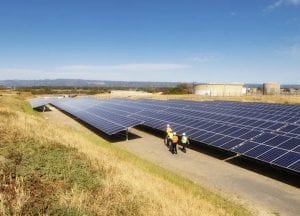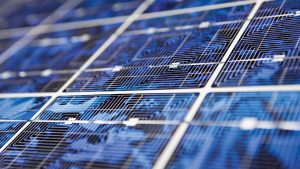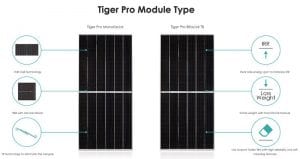A legal stoush that has been unfolding in Europe and the US between some of the world’s biggest solar PV manufacturers has reached Australian shores, with the filing of patent infringement complaints in Australia’s Federal Court.
The Australian arm of Korea-based Hanwha Q Cells said on Wednesday that it has filed the complaints against JinkoSolar and LONGi Solar, alleging that the China-based rivals had used its patented passivation technology, which boosts solar cell efficiency, without authorisation.
It says that it began began manufacturing its Q.ANTUM solar cells using this patented passivation technology in 2012 and has produced more than 2.5 billion such cells globally.
The Australian lawsuit joins three others also initiated by Hanwha: one in Germany against Jinko and Norway’s REC, and two more against the same companies plus Longi in the US.
The aim of all three claims is to get a court order to stop the rival solar companies from importing, marketing, and selling the alleged infringing products in the corresponding markets – although in Germany it goes one step further and calls for the recall and destruction of alleged infringing products.
“Intellectual property laws exist to incentivise innovation and protect innovations from being unfairly used, and we will vigorously defend our technology from infringement,” said Hanwha Q-Cell CEO Hee Cheul Kim, in a statement on the Australian lawsuit.
“The products supplied by these two companies are using technology that we believe is protected by our Australian patent and we have taken these actions both to protect our property rights and to give the market confidence that research and development initiatives to develop future technologies can continue.
“We are not prepared to tolerate the unauthorised distribution in Australia of products that incorporate our patented technology.”
The company’s named in the Australian case have not yet responded to those specific claims, but both last week released statements denying the allegations in both the German and US cases.
“Based on JinkoSolar’s preliminary analysis of Hanwha’s complaints and the asserted patents, the Company believes that the complaints are without technical or legal merit,” a statement from that company read last Wednesday.
“JinkoSolar, therefore, categorically refutes Hanwha’s allegations.”
The company said it was working closely with its legal counsel and technical advisors to vigorously defend against the claims made by Hanwha, and that did not expect any disruption to its normal operations arising from the matter.
“JinkoSolar has been allocating substantial resources to R&D over many years, and has broken world records for cell efficiency,” the statement said.
“(The company) will strive to maintain its market leadership in solar module supply to the US and EU markets, providing its customers with high quality products and timely delivery.”
And in its own statement, also released last Wednesday, LONGi also denied the allegations, while also noting that it had yet to receive any legal case documents, “nor any official business negotiation correspondence from Hanwha Q-CELLS” on the matter.
“LONGi has always attached great importance to technology innovations and respect for intellectual properties,” the statement said.
“At present, the company owns over 1,000 patents and patent applications, and maintains global leadership in various key photovoltaic technologies. LONGi’s PERC cells have repeatedly earned world records in cell efficiencies.”
The company said that, from a technical perspective, the current technology used in LONGi’s products was not the same as the technology contained in the disputed patents: “the disputed patents are about ALD technology while LONGi uses PECVD technology.”
That said, LONGi also stressed that it was “prepared and ready” to fight the complaint.
Interestingly, in the statement on the Australian lawsuit, Hanwha says its patent claims are not restricted to any particular method of manufacture, such as atomic layer deposition (ALD) or plasma-enhanced chemical deposition (PECVD).
Rather, it says, they are directed to a solar cell structure with a first dielectric layer including aluminum oxide and a second dielectric layer that contains hydrogen.
“The patented technology can be applied in many ways. A solar cell employing what is known as Passivated Emitter Rear Cell (PERC) technology is only one type of solar cells that may use technology covered by Australian patent no.2008323025 and its global equivalents,” the statement says.

